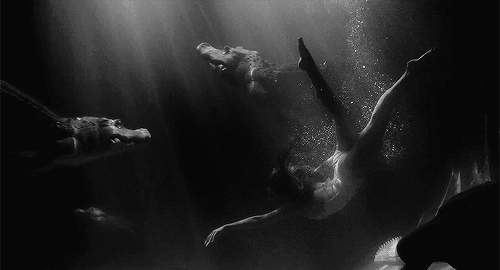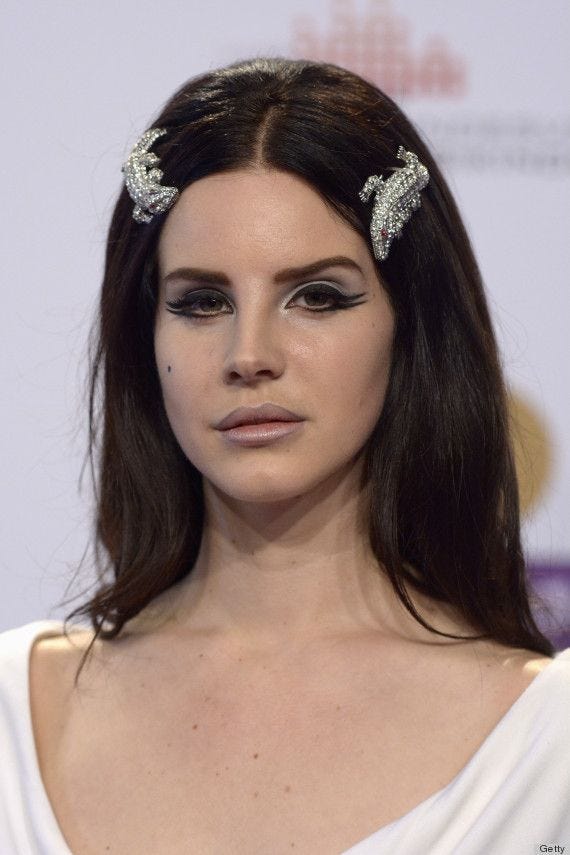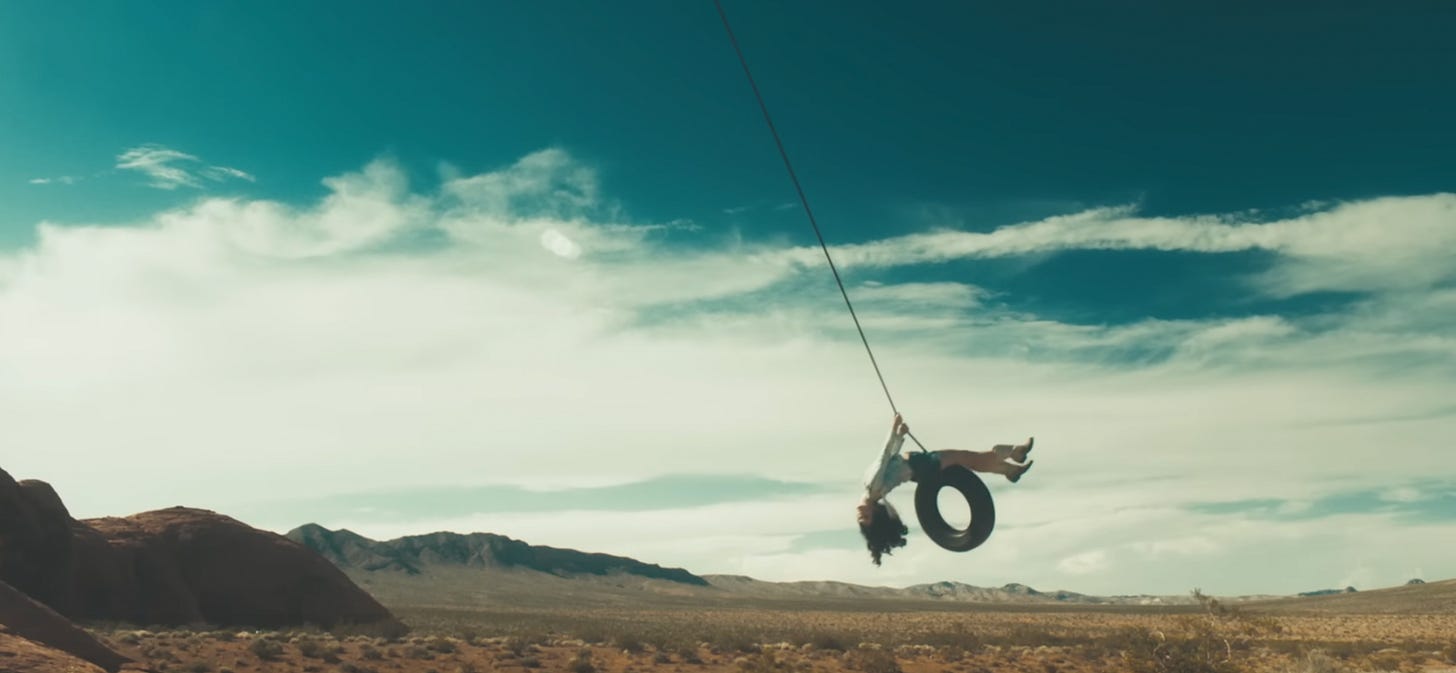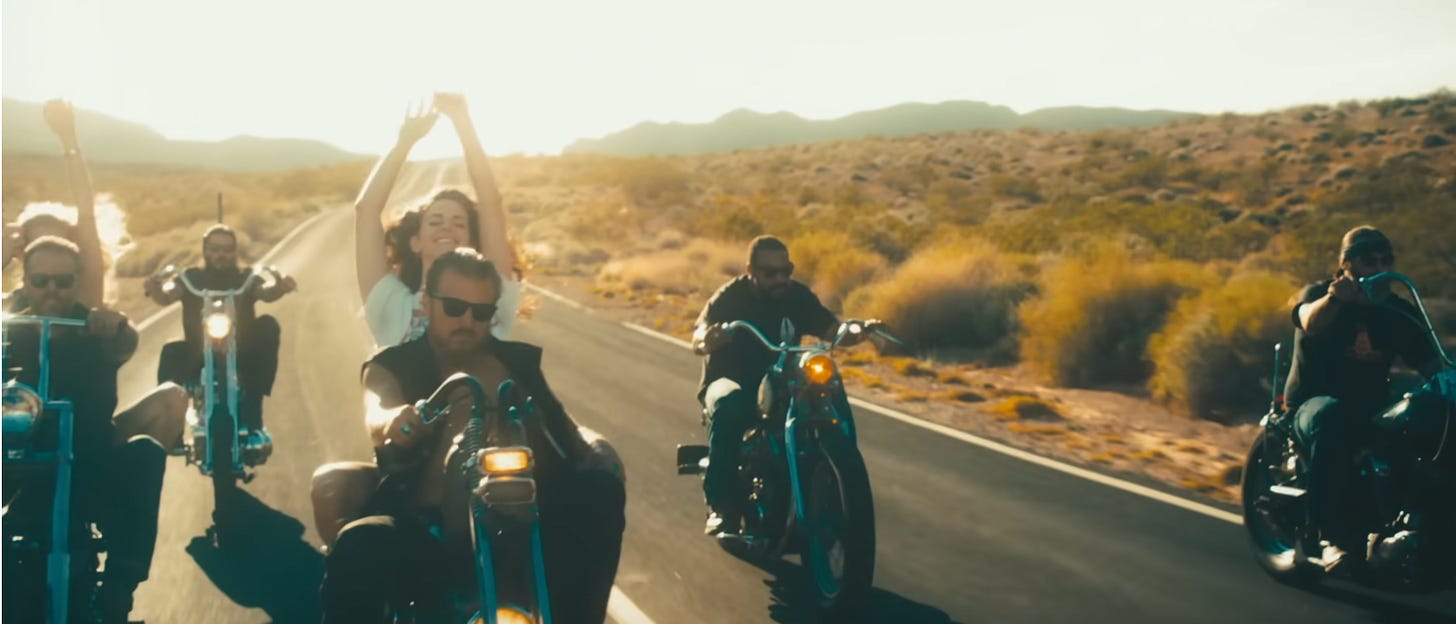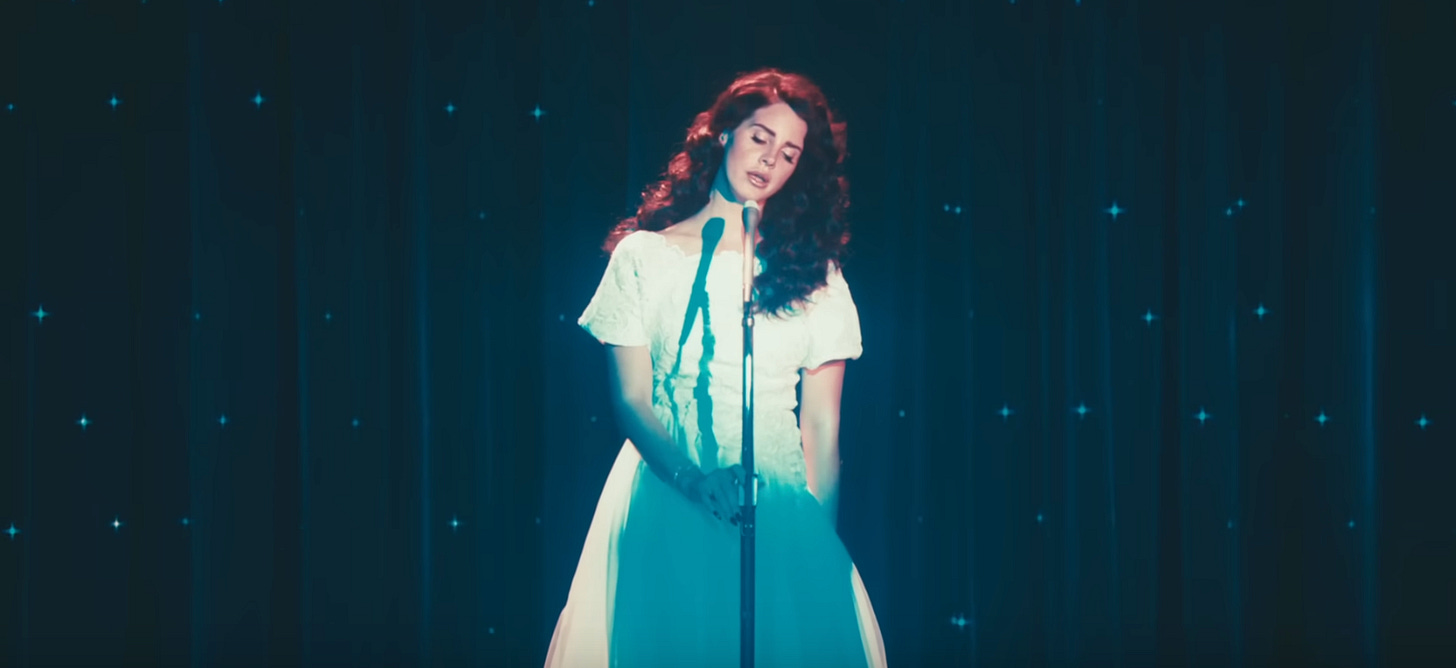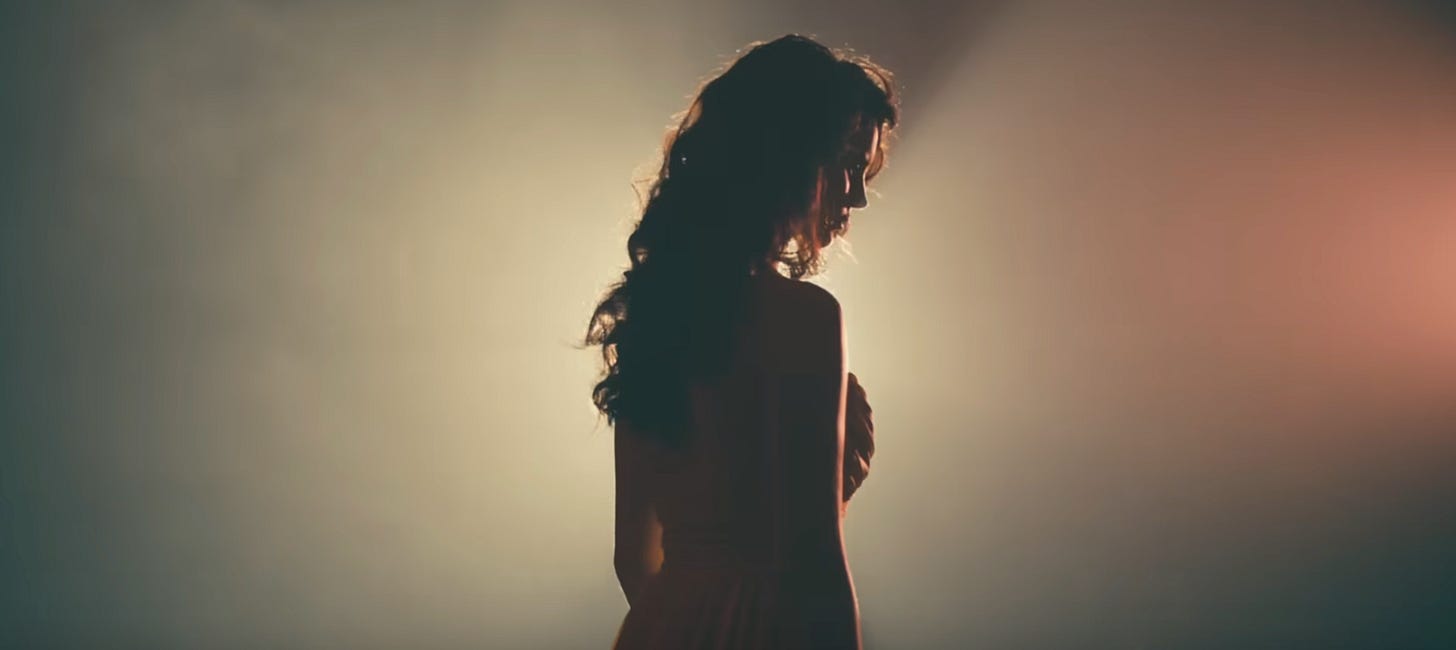I've Got A War In My Mind
Part 2 of the Lana Del Rey series looks at the counterintuitive glamour of Ride.
Who are you?
Are you in touch with all of your darkest fantasies?
Have you created a life for yourself where you can experience them?
I have.
I am fucking crazy. But I am free.
-Lana Del Rey, 2012
Remember how I said we’d go album by album?!
I completely lied, friends!
I don’t know what the structure of this series is going to be. I just know I have to keep going. And after I wrote about “Video Games”, I knew I had to write about “Ride”.
Technically that is going album by album because it’s on the Paradise EP. But I’m concentrating on singles for the time being.
Also, I just want to acknowledge in the time that’s passed since I wrote my last newsletter1, Lana has apparently married the Alligator Man. I wish them both every conceivable happiness, and we will likely get to that development. But allow me to state for the record that Lana told us this would happen back in 20122:
And in 2013:
Okay, now onto the matter at hand.
Ride was released in 2012. Like Video Games, the subject of my previous post, it got a distinctive music video. It’s flawed, but remains compelling. This is also one of those music videos that truly enhances the story of the song itself. The music video depicts a young woman on the outskirts of Las Vegas with dreams of being a singer, who survives on sex work. Her primary clientele are old men in biker gangs.
When I first introduced this series, I made a rather bold proclamation that glamour and our psychological shadow are connected. This is among the more insane things I’ve ever proposed because on the surface, glamour and shadow seem to occupy opposite ends of a spectrum.
On the one end, an idealized image of who you wish to be.
On the other, the unconscious part of you that you can’t even visualize because you’ve repressed it so much you don’t even know it’s there.
The way we conceive of each of these things pits them against each other. Your Fantasy Self—your dream Self—is diametrically opposed to whatever aspect(s) of yourself you’ve suppressed or denied.
So what if you combined them? That is, what if you decided to interpret a shadow aspect of yourself as if it were a representation of your wildest dreams? As something effortlessly beautiful and desirable?
What would you create as a result?
I think the answer is something like Ride.
And secondly, what would happen to that shadow aspect if you did?
The Shadow
The first Shadow aspect at play in this music video is pure, naked neediness. Quoth Lana in the monologue:
When the people I used to know found out what I had been doing How I had been living, they asked me why But there's no use in talking to people who have a home They have no idea what it's like to seek safety in other people For home to be wherever you lie your head
Seeking safety in others, rather than in yourself, is a needy, codependent type of behavior. In our hyper-individualist American culture, virtually nothing is more shameful than depending on other people.
And the other Shadow aspect is infidelity and, to be indelicate, sleeping around:
I was born to be the Other Woman Who belonged to no one Who belonged to everyone
The music video’s suggestion that this Other Woman engages in sex work adds another layer of taboo connected to promiscuity. But seriously, which archetype is more routinely condemned and reviled than the Other Woman?
It’s worth noting that both of these shadow aspects-neediness and promiscuity—exist in the collective shadow, which is why the music video attracted some controversy at the time of release. We collectively shun these qualities in women in especially harsh ways. Sonic Youth singer Kim Gordon hated Ride so much that she called Lana out in her book:
“Today we have someone like Lana Del Rey, who doesn’t even know what feminism is, who believes women can do whatever they want, which, in her world, tilts toward self-destruction, whether it’s sleeping with gross old men or getting gang raped by bikers3…If she really truly believes it’s beautiful when young musicians go out on a hot flame of drugs and depression, why doesn’t she just off herself?”
Which is an incredibly hostile thing to write about anybody, even if you really hate their artwork! Telling other women artists they should kill themselves just because you dislike their work is also pretty anti-feminist, non? But I digress.
The Glamour
Glamour is found in Ride primarily through compositions that position Lana’s character as wild, free, and/or commanding the stage. The opening shots, with the tire swing, are pure glamour.
Here’s a few more examples:
These shots include elements of mystery, effortlessness, and most potently the possibility of escape. Ride is primarily a fantasy of escape—of escaping even the most basic strictures of conventional society and respectable femininity.
The Problems in Ride
Here I just want to note and acknowledge that Lana’s decision to wear a Native American war bonnet is cultural appropriation. There’s no way around it. Within the context of the video itself, is the “character” she’s portraying likely to care? Probably not. But even so, it’s a less-than-effective artistic choice, because it jarringly takes you out of the story. It doesn’t have direct relevance to the other themes at play (daddy issues, abandonment and the eroticization of same, outlawry, the open road). And if this choice makes it impossible for you to relate to this artwork, or to Lana herself, as something worthy of your time—I’m not going to argue with you, I understand why you may feel that way. I also recognize that for many, the attitude towards sex work in this video is offensive for a variety of reasons.
The Surprising Usefulness of Glamorizing Your Shadow Desires
Glamour appearing in Ride is unsettling because it’s applied to taboo experiences: sex work and being in the outlaw biker gang community. I know that OnlyFans has helped to mainstream sex work but a lot of people remain morally opposed to it4. Certainly it isn’t portrayed as empowering in Ride the way that many third wave feminists conceive of it—the character Lana’s portraying doesn’t get rich off what she does. Instead she lives a precarious life, wandering around gas stations waiting for people, relying on the “kindness” of older men. And the daddy-daughter undertones of it all are…disconcerting5.
Meanwhile, even though the bikers in Lana’s video don’t do much more than ride their motorcycles through the desert and have a bonfire, most people associate biker subculture with the Hells Angels, racketeering, drug trafficking, and organized crime.
Which is why, as they did with Video Games, many people instinctively recoil from Ride.
The Ride music video serves as further evidence to support my central claim that Lana has no interest in using her art to make moral evaluations. Instead, she looks at experiences—even fringe, dangerous, or painful experiences—the way that an artist looks at a palette of paint colors.
Because, as I’ve said before, she’s an artist, not a moral philosopher.
For an artist, any color can be useful depending on what they’re creating. Even an ugly muddy brown creates depth in a landscape painting. All colors, all notes in a scale, hypothetically have an artistic use.
But you can also decide that you don’t like a color and don’t want to use it in your latest painting. You can do this without disowning, judging, or fearing the color. You can just keep the cap on the little squeeze-bottle of paint.
I don’t think everyone “should” live as a biker gang groupie. And I wouldn’t choose this life for myself.
But how would your life change if you adopted a perspective of making your life your art, as the lyrics say? Instead of judging your experiences, what if you appraised them the way a painter looks at paint, or how a musician hears a melody?
When I started doing this, I discovered (among other things!) that I have a subconscious desire for romantic rejection. If you are an attractive man who is coolly disinterested in me, congratulations, you are the fulfillment of my deepest, previously repressed desires. There’s a nonzero chance that you will be the muse who animates my nightly dreams, inspires all my poems, and galvanizes my waking existence with the exquisite pain of humiliation, alienation, confusion, and despair. Hot!
Ultimately it does not matter how I ended up this way. (I’m sure those of you who have the same pattern can hazard a guess.) I just wanted a way to come to terms with it.
So, what happened when I privately decided to interpret my latest romantic rejection as the fulfillment of my wildest dreams? As something beautiful, glamorous, aspirational, exactly what I wanted? What happened when I fully inhabited the Unhinged Bronte Heroine role I was born to play?
It became enthralling…in a different way, because I was conscious of it.
And then in a matter of roughly a week and a half, Kirkland Brand Heathcliff became much less interesting. I’ve had my fill of that deep blue paint color. I still think there’s something aesthetically appealing about romantic rejection by a beautiful man. Arguably it made me the writer and artist I am today. But I’d like to paint with a different color now.
This is what Lana’s core artistic project is all about6. She is choosing to interpret situations others might call demeaning, dangerous, dark, precarious…as glamorous. Somehow, counter-intuitively, this allows her to get free of them.
That’s what the excerpt of the monologue at the top of this essay is all about. She’s created a life where she gets to experience her darkest fantasies—even if only on the set of a music video. And people think she’s crazy. But she’s free.
Magically, the same thing can be true for her listeners. Ride (along with much of Lana’s work) helped me to consciously appreciate the fatalistic thrill of falling for people who are bound to leave you. And of a precarious existence reliant on the largess of capricious customers (in my case, when I was underemployed as a bartender). As a result I feel like those patterns are finally done repeating after many years of being completely stuck.
It’s just that a lot of people find this whole paradigm—of offering aesthetic approval to shadowy experiences—threatening as hell.
I used to be that way. Lana used to scare me. I used to think she was signaling moral approval of these fringe experiences rather than aesthetic approval. I was also drawn to her—and then I worried what that meant about me.
So, if she scares you and excites you in equal measure, perhaps you, too, have a war in your mind.
What you learn with Lana is that transformation—real, powerful change—happens the opposite of the way you think it does.
Sorry I’ve been away so long. My dad has been sick and I’ve been caring for him.
I know these are crocodiles, but my point stands! She manifested this!
This literally does not happen in the music video and isn’t suggested either??
Not going to litigate this!!
Even though a lot of contemporary country songs about fathers and daughters walk this same queasy line and nobody goes knives out for that!
She’s not the only artist to have ever done this, by the way.





